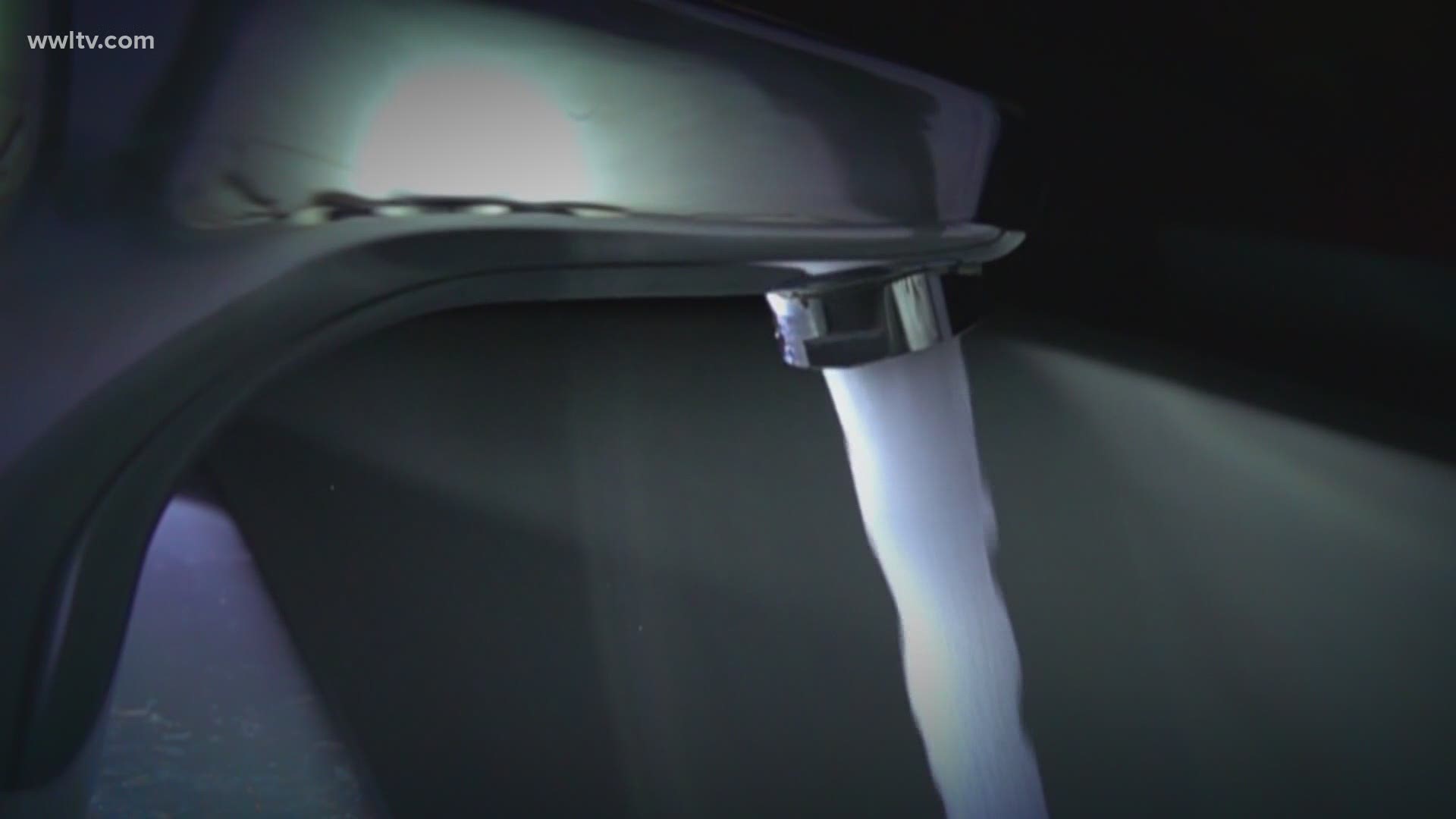NEW ORLEANS — Responding to rising concerns, 10 states have set limits for a group of potentially dangerous chemicals called PFAS in their drinking water.
But Louisiana is not one of them, and environmental law experts have reason to believe that New Orleans officials are not even checking to see if the chemicals are in the city’s drinking water system.
“They have the ability to test for these compounds, these chemicals that we know have health impacts, and they’re not doing it,” said Jeff Dye, a local attorney whose background is in environmental science.
PFAS stands for polyfluoroalkyl substances. It's a group of hundreds of man-made chemicals used to make products for the last 80 years, most notably Teflon made by DuPont and Scotchguard made by 3M. PFAS are prevalent in fire-retardant and waterproof materials, in firefighting foam, nonstick cookware, carpets, popcorn packaging and tents.
They are called “forever chemicals” because they do not break down in the environment or in the human body and they can accumulate over time. They were allowed to run off, unchecked, into the nation's groundwater and waterways over the years -- from the chemical plants where they were produced, from military bases where they were used to put out fires and from everyday uses in homes and businesses.
But things began to change in 2013, after a massive study connected high PFAS exposure to a higher risk of testicular, kidney, prostate and ovarian cancer, non-Hodgkin’s lymphoma, compromised immune response and stunted fetal development.
The EPA took notice and ordered local drinking water systems to test for the six most prevalent types of PFAS between 2013 and 2015. Most of them, including the Sewerage & Water Board in New Orleans, reported undetectable levels of those six compounds.
In 2016, the EPA issued unenforceable health advisories warning that PFAS above 70 parts per trillion in drinking water is dangerous.
But as more studies are conducted and more data is released, additional and improved procedures have been developed to test for hundreds of additional kinds of PFAS.
That’s gotten a lot of attention in states like Michigan, New Jersey and New Hampshire, where they limit concentrations of some types of PFAS in drinking water to as low as 8 parts per trillion.
“There's no reason why Louisiana can't address this like other states have already,” said Chris Dalbom, assistant director of the Tulane Institute for Water Law and Policy.
The Water Institute usually stays out of policy debates, but it made an exception for PFAS, filing a comment with the EPA asking it to impose stricter regulations on PFAS and to lower its threshold below 70 parts per trillion.
Researcher Ryan Anderson, lead author for the Water Institute’s recent white paper on PFAS, said it’s imperative that EPA act decisively to protect drinking water.
“It's on the federal government to stop this before it happens,” she said. “Like they haven't with chemicals like PCBs and DDT.”
In January, the Environmental Working Group, a national nonproft of scientists dedicated to environmental protection, took samples from 44 drinking water systems around the country. It combined the results of 30 different types of PFAS in each tap water sample and measured 41.8 parts per trillion in New Orleans, eighth highest of the 44 tested.
Only nine of the 44 had previously reported detectable levels of PFAS to the EPA or state authorities, the Environmental Working Group said.
After that study came out, the Sewerage & Water Board of New Orleans put out a press release stating it had tested for six PFAS chemicals in 2015 and found none. But it said it shared the public’s concerns and “we must continue to be vigilant and learn more about detecting and, if necessary, responding to the presence of PFAS.”
S&WB said its East Bank water system was tested, along with 24 other systems around the country, by the U.S. Geological Survey and the EPA between 2010 and 2012 and they found detectable traces of PFAS.
Dye wanted to know exactly what the Sewerage & Water Board was doing to keep measuring for PFAS after the 2015 samples, so he filed a public records request for test results and any communications, such as emails. On April 28, the S&WB told him there were no records responsive to his request and closed his file.
“I challenged that and said, 'No, there has to be. It's just inconceivable that you don't have records,’” he said.
A source had already given Dye a summary of the test results from 2015, so he at least knew those should have been produced. WWL-TV sent that copy of the results to the S&WB on Monday and asked why those weren’t provided to Dye.
The agency responded by reopening Dye’s file on Tuesday and sending him the same document he had already given WWL-TV.
“What I'm looking for here is simply transparency and I want some kind of action plan that would include actual testing for PFAS's in the community,” Dye said.
WWL-TV asked the S&WB why there wasn’t any correspondence or more recent records related to PFAS monitoring and if the S&WB is actively monitoring for PFAS in the water. It declined to respond to those questions but rather pointed to the January press release.
“We should know whether there's a problem or not. And it's not acceptable to not know,” Dye said.
► Get breaking news from your neighborhood delivered directly to you by downloading the new FREE WWL-TV News app now in the IOS App Store or Google Play.

